Three Insurance Experts Explain the Intricacies of Insuring Your Art Collection
I am often asked by clients if they should cover their art under their homeowner’s insurance (HO) or if they should investigate insuring their art with a separate fine art collectors’ policy. Since I am an art dealer and not an insurance agent, I thought it prudent to do a deep dive into the world of fine art insurance so I could properly advise my clients. As I started to research the subject, I was shocked to discover how little I knew about fine art collector’s insurance and how inadequately most HO policies cover collectibles like fine art. To help others better understand how their art is currently covered, or not covered, I have written this informational post titled, Fine Art Insurance 101.
To research this article, I looked at both homeowners’ and personal inland marine policies, and specialized policies written just for art collectors. I also interviewed an insurance agent who offers homeowners’ insurance, a fine art insurance specialist, and a fine art provider who underwrites fine art policies to learn what is covered, how is it covered, who will pay a claim, and how it will be handled.
To better understand each perspective, I have divided my post into three parts.
Part One:
Is Your Art Adequately Covered by Your Homeowner’s (HO) Insurance?
I called the agent who handles my HO insurance, Connie Butler. Connie is the Personal Lines Manager for Champion Commercial Insurance in Dallas, Texas. She was kind enough to visit with me about how fine art and other collectibles are covered by most HO policies, and ways to improve on the protection they offer. If you have actually read your HO policy front to back and have scheduled your fine art and other collectibles on an attached personal Inland Marine Policy, move on to part two, if you have not done both of these, don’t skip part one!
Part Two:
An Interview with a Fine Art Insurance Specialist
I emailed Houston, Texas based Adrienne Reid, Vice President of one of the largest fine art insurance specialty brokerages in the country, Huntington T. Block, and she was kind enough to answer my many questions about the when, how, and whys of fine art collector’s insurance. Early on in our conversation, Adrienne answered the “When” question by saying “If you can walk around your house and you determine that you have more than 5 artworks that exceed $10,000 each in value, you should consult an agent or firm that specializes in fine art insurance.”
Part Three:
An Interview with a Fine Art Insurance Provider
Most insurance is underwritten by an insurance provider. A provider evaluates the risk, provides a quote, issues coverage, and, in the event of a covered loss, pays the coverage set forth in the policy.
To learn more about the role played by a fine art insurance provider, I emailed Katja Zigerlig, Vice President of Art, Wine + Collectibles Advisory with Berkley One, a Berkley Company that specializes in providing insurance for fine art and collectibles, as well as high-end homes, autos, liability, and watercraft. She and her team were extremely helpful and most generous with their time.
Note: I am not promoting any specific agent or insurance company with this post. I am grateful to and crediting those who gave liberally of their time to advise me, and thankful for the education I received in the process. I hope you find what follows enlightening.
Part One:
Is Your Art Covered by Your HO Insurance?
My first inquiry focused on how a fine art loss was handled by a standard HO policy. To do this, I interviewed the agent who currently handles my HO insurance, Connie Butler. Connie is the Personal Lines Manager for Champion Commercial Insurance in Dallas, Texas.
Soon into the interview, I realized that certain types of personal property, primarily collectibles like fine art, are not normally handled the way I thought. I naively “assumed” that the word “All Risk” meant just that, and all my personal property was covered up to the amount stated on my policy’s declarations page. So, I thought that if I had a policy with a personal property limit of $500,000, and a $25,000 painting was stolen from my home, it would be completely covered, less the deductible of course. I was wrong. I now realize that HO insurance is designed to insure your home, not protect your art collection.

Many of your possessions like clothes, furniture, and appliances are covered, in most cases, by a replacement value. In the event of theft however, other item categories like fine art, jewelry, and furs, have classification limits varying from $500 to $5,000 per category depending on the policy.
To provide more realistic and broader coverage to your valuable personal property items like fine art, your agent will normally offer you another type of policy called a personal Inland Marine Policy, sometimes called a “floater” or “endorsement.” In this type of policy, individual items and their value are listed; the coverage is broader; most claims are handled quicker; and the coverage is usually less expensive than blanket coverage. The following is a synopsis of my interview with Connie:
The most common types of HO policies and how they generally relate to a fine art collector.
Types of HO Policies:
The two types of insurance policies available to a homeowner are “Named Peril” and “All-Risk.” As its name implies, the “Named Peril” policy only covers the perils that are listed in the policy. Of the two, the “All-Risk” policy usually provides broader coverage for a homeowner.
What an All-Risk HO policy covers:
Within the stated dollar limits on a policy’s declarations page, an All-Risk HO insurance policy provides coverage from all risks or perils that could damage your home or its contents and personal property unless the risks are specifically excluded or limited by the policy.
How your personal property is covered by most HO polices:
What is covered:
Most All-Risk HO policies provide blanket coverage for most of your personal property. In the event of any covered loss, a deductible will be applied. How these claims are paid will depend on if your personal property is covered for “Replacement Cost” or by “Actual Cash Value.” In the event of a total loss of an insured item, “Replacement Cost” coverage will replace the item with a new one of equal or like quality, while “Actual Cash Value” coverage will provide the insured a cash payment equal to the item’s depreciated value at the time of the loss.
What is Partially Covered (Special Limits of Liability):
In most All-Risk HO policies, personal property items of a certain type or category are handled differently than the rest of your personal property when it comes to theft or mysterious disappearance. These categories are individually identified in the policy and often include collectibles such as fine art, currency, coins, stamps, and jewelry. The amount of money paid to the insured in the event of this type of loss is capped depending on the category. For instance, the amount of money paid the insured for the theft of one or more artworks that have a total combined value of $20,000 could be as little as $500 depending on the policy. These are items that the Insurance companies want you to schedule separately under an Inland Marine Policy.
Other Types of losses not covered in an HO policy:
Losses typically not covered include damage caused intentionally by the insured, damages caused by lack of proper maintenance, terrorism, nuclear war, damage by smog, bug infestations, rust, mold, general wear and tear, and any other exclusions listed in the policy contract. Also, most all policies will protect the insurance company if it is found that the insured intentionally provided false information to get insurance or while making a claim.
How your agent can provide better coverage for your personal property than your standard HO policy provides:
To protect an insured’s property that is not covered by the standard HO policy, companies normally offer another type of policy called a personal Inland Marine Policy. Attached to this policy is a list provided by the insured of all the property that exceeds the limits of their homeowner’s policy that they want insured and the value they want each item insured for. This type of policy will normally have fewer restrictions than a HO policy and provide more in-depth coverage. If an item on the schedule is lost to an unexcluded risk, the insured will receive the amount of money specified as the items listed value, unless a deductible applies. If the item is damaged and not a total loss, the policy will normally pay for its restoration up to its listed value.
Scheduled Personal Property Insurance is always an “All Risk” policy. This means that it will cover against “… all risk of physical loss or damage to your property described in the schedule of Personal Articles, unless an exclusion applies.” For each item covered, you would normally have to provide your agent with a photograph, a copy of the original purchase receipt, and sometimes an appraisal if you want to list the item for more than was originally paid.
I asked Connie when she thought an insured should add a personal Inland Marine Policy to their HO insurance. Without hesitation, she said that “if you have any personal property valued at $2,500 or more, you should list it separately on a Scheduled Personal Property Policy.” That is the best way of knowing that it is covered properly.
Summary:
Homeowners’ Policy:
Be sure your HO is an “All Risk” “Replacement Cost” policy. It will usually cost a little more but worth it if you have a tornado rip through your home.
To truly understand how your home and possessions are insured, read your entire homeowner’s policy, especially the attached “other coverages” and “endorsements” pages. The “other coverages” and “endorsements” have the power to change coverages in the basic HO policy.
If you have read something in your policy you did not expect or did not understand, call your agent, and get clarification. After a loss is not the time to find out you were not covered for a risk you assumed you were.
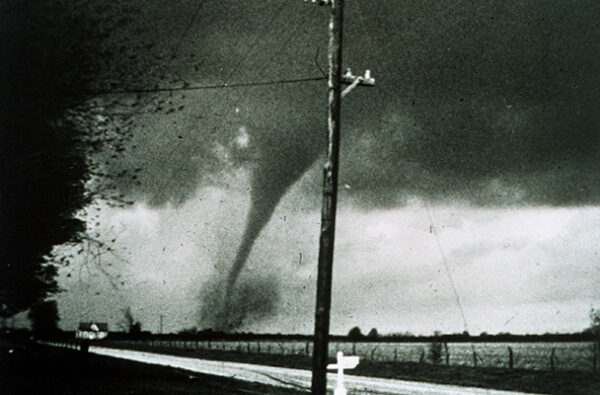
According to my agent, it is important to photograph each room showing not only your art but all of your personal property that is visible in the room. (although this may not relate to art, open closets and drawers and photograph what is visible inside.) Categorize images by room and upload the files to the cloud and to several thumb drives that can be kept in a safe deposit box or with a relative. My agent said that if your house is hit with a tornado and your possessions are scattered over the county, you will have a hard time proving to the insurance company that you actually had the items in your claim without photographic evidence.
Inland Marine Policy:
Scheduled Inland Marine Policies are All-Risk and pay the insured the amount listed on the policy or repair the item if a loss occurs that isn’t excluded by the policy.
Any item you own that is kept in your home and is valued over $2,500 should be itemized on a scheduled personal Inland Marine Policy. You can update the value on any item if you can provide your agent with evidence of a greater value. (I recommend that if you do not have a separate policy covering your fine art, that any artwork you have paid over $1,000 for be listed on your Scheduled Personal Property Policy.)
Part Two:
An Interview with a Fine Art Specialist.
Insurance companies that specialize in HO and automobile insurance are rarely equipped to handle the specific needs of an “Art Collector.” The good news is that there are companies that write policies geared specifically for the fine art collector and agents who specialize in matching these policies with those who need them.
One of these agents is Houston-based Adrienne Reid, Vice President of Huntington T. Block. Adrienne has specialized in fine art insurance for over 15 years helping museums, galleries and collectors keep their art properly insured. Via email, Adrienne was kind enough to answer my many questions about the when, how, and whys of fine art collector insurance.
Here are her responses to my questions:
When should a person consider getting a separate policy for their artwork?
When you start growing your collection beyond just a couple of artworks, you should investigate insuring your art under a separate fine art policy. If you want broader and more specialized coverage for your art than what can be obtained from your homeowners insurance company, a fine art collectors’ policy is going to be a better option.
What are the advantages of having a separate fine art policy over listing your art on your scheduled personal property policy?
Generally speaking, a fine art policy includes coverage for breakage, flood, and mysterious disappearance – which are commonly excluded on a homeowner’s policy. The policy also typically extends to transit and other locations – which may not be the case on a homeowner’s policy. Make sure to read an actual issued policy to confirm what is covered. But by far the biggest advantage is having a specialized broker who is knowledgeable regarding fine art coverage and who will place the coverage with an insurer who uses fine art specialized adjusters in the event of a claim. A homeowner’s policy would send a general property adjuster, who may not know how best to handle a fine art loss or understand the implications of loss in value to artwork that can be restored.
What types of fine art policies are available?
For Huntington T. Block clients, both personal and corporate, we offer either a Scheduled (agreed value form) or a Blanket (current market value form) based on a client’s situation.
The Scheduled Form – The values on the schedule attached to the policy are the agreed values for coverage under the policy.
Pro: The amount insured is certain and does not go down if market prices fall
Con: If the value goes up, the insurer will only pay the scheduled amount. All new acquisitions and collection changes must be reported immediately and changed on the policy. Only the specific artworks scheduled on the policy are covered.
The Blanket Form – The policy limit is blanket over all locations. No schedule is attached to the policy, and no individual values are listed. Valuation is current market value.
Pro: Current market value can provide assurance in the event that artworks increase in value due to market conditions, for example, driven by popularity of an artist or genre, death of an artist, etc. All artworks owned by the collector are covered up to the policy limit with no per item maximum.
Con: If values go down, there is a possibility the insured will collect less than they paid for the item(s) because the valuation is based on current market values.
For both policies, collectors choose a deductible for their level of risk tolerance. A high deductible provides lower annual premium, but more out of pocket in the event of a loss. A low deductible has higher annual premium, but less out of pocket in the event of a loss.
Of the two types of policies, which is the most popular among your clients?
About 80% of our clients have chosen a Blanket Coverage policy.
Can you give an example of how you would determine which type of policy is best for a new client?
If a collector is actively acquiring and wants protection in case their artwork values go up prior to getting an updated appraisal – a blanket policy may suit them. If the collector is not actively acquiring and wants certainty in the value of the art insured on the policy – then a scheduled policy may suit them.
What types of questions do you ask a prospective client to determine if they need Fine Art insurance?
Do they have a collection of more than one or two artworks?
Do they plan to continue collecting?
What is the total value of the artwork?
Where is it located?
Do they intend to sell the collection in the near future (or is it part of an estate)?
When was the last appraisal done?
Do they have an inventory of the collection?
I know that most insurance is underwritten by third party companies. What do you need from a prospective client to get a premium quote?
When the collector determines that a separate fine art policy meets their circumstance, I send them an application. Once it is returned along with a copy of the most recent appraisal or collection inventory, I will send it on to several underwriters to get quotes.

How do you determine what underwriters to contact when looking for the best match for your client and what is the process of approaching the ones you feel would be the best fit for a quote?
This depends entirely on an insured’s location (are they in a catastrophic area?), the total value of the collection, and how quickly they need a quote turned around. Once I determine the underwriters, I submit to them the completed application, collection appraisal or inventory, and the quote specifications. As a broker, my role is to represent the client and identify underwriters for their coverage needs – and make sure that it is the most competitive premium available.

How many companies are out there that do Fine Art collection underwriting?
There are about eight insurance companies that have specific fine art underwriters in the United States.
Is there an average number of underwriters you would approach per client?
Generally, no more than three – unless there are issues with the submission – like claims history or catastrophic area, etc. Typically, once we receive an application, we know which underwriters to approach.
I understand that in most cases, fine art collection insurance is less expensive than scheduling the artworks on a homeowner’s policy. Can you provide a range of a percentage cost per year that each type of fine arts policy covers?
That is a tough question – because so much depends on the size and location of the art collection and the client’s claim history. HTB writes over 1,000 art collectors in the United States. In general, premium rates go down as the collection total value goes up.
Once insured, what is the most important thing a collector can do to protect their collection?
A good digitally stored inventory, and quality digital photographs of each artwork is paramount. These should be stored offsite and/or in the cloud so that in the event of a catastrophic loss, an insured has documentation to provide to the adjuster.
As with any insurance claim, the more information and documentation that you are able to provide the adjuster, the better. An adjuster may have a difficult time settling the appropriate payout for a claim if the collector does not have detailed information about the artworks. Making sure that the collector has updated documentation (that is accessible after a loss) is one of the most important things they can do to be prepared.
My research shows that there are a lot of companies offering fine art collection insurance based in London. Many of them will offer a quote to ensure a single artwork online by asking only three questions; your name, email address, and the value of the artwork you want insured. Can you comment on these companies?
I am not sure that a company would be in a position to offer a binding quote based on such limited amount of information. It may be an attempt to gather information for another purpose.
Once you have your fine art policy in place, what actions should you take after a loss; say a picture falls off the wall or your artwork is lost in shipment?
Tips for these two scenarios:
Art Falls Off the Wall
Take several photographs before moving the artwork.
If safe to move, move artwork out of harm’s way.
Determine extent of damage. Depending on the damage, it may not be desirable to file a claim. But it is always best to notify your broker of the damage so they can notify the insurance company. It is better to err on the side of reporting damage; claims can always be withdrawn if it is decided to handle the expenses out of pocket.
Report to your insurance company
Artwork is Lost in Shipping
Notify the shipper and the insurance company.
The insurance company will work with the shipper to investigate the loss. If the artwork is later received, keep the insurance company updated.
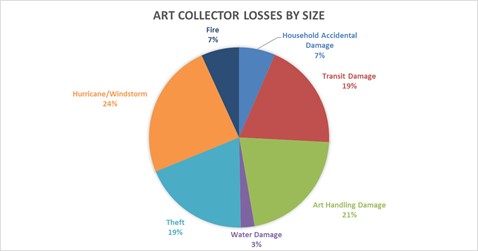
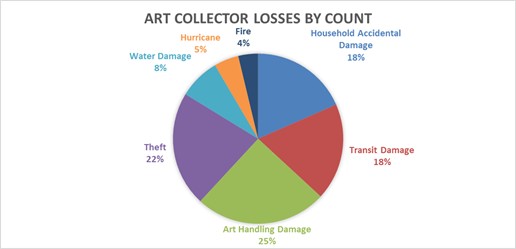
Summary:
I think Adrienne pretty much covered what is important to know about obtaining a fine art collectors’ policy. However, I did want to mention two things to think about while applying for, and after your insurance is in force.
If your agent provides quotes from several underwriters, in addition to reviewing the cost, limits, and deductibles of each policy, be sure to ask your agent about any differences in coverage each provider is offering. Also, after the fine art policy you have chosen is in effect, if you have any artwork already covered by your personal inland marine policy that is now also covered under your new fine art policy, don’t forget to call your HO agent and have those works removed. You do not want to pay for double coverage and then have the company who covers your fine art insurance feuding with the company that covers your HO insurance about who is responsible for paying a claim.
Part Three:
An Interview with a Fine Art Insurance Provider
When you have made the decision to insure your art on a separate fine art collectors’ policy, the organizations that your agent contacts to request coverage options and premium quotes are known as insurance providers. These are the entities that underwrite the insurance and are responsible for paying any covered claims.
To better understand the role of the provider regarding fine art insurance, I emailed Katja Zigerlig, Vice President of Art, Wine + Collectibles Advisory with Berkley One, a Berkley Company. Through the insurance company subsidiaries of W. R. Berkley Corporation, Berkley One specializes in underwriting insurance for fine art and collectibles, as well as for high-end homes, autos, liability, and watercraft. Katja and her team were kind enough to furnish answers to my questions about the role of a fine art insurance provider.
Following are the answers to my questions:
What is a provider’s business relationship with the insurance agent?
As an insurance provider, Berkley One works very closely with independent insurance brokers and agents, whose role is to work with a client directly and advise him or her on their insurance needs based on risk exposure. Independent agents and brokers typically work with multiple providers to offer clients a range of insurance solutions that fit their needs.
What is the provider’s business relationship with a prospective client?
When an applicant who is looking for coverage contacts an agent who specializes in insuring fine art, their agent will begin working with providers such as Berkley One to obtain an insurance quote. To get the information that we need to provide a proper quote, we would, along with the applicant and agent, work together to get correct information about the applicant—including things like home value, elevation certificates if the applicant lives in a flood zone, appropriate legal documents when necessary, and a full schedule of artworks to be insured—to help make sure we can offer a solution that fits their needs.
Sometimes we get inquiries from applicants directly. When this happens, we will find out more information about the applicant and risk, then connect them with an appropriate independent insurance agent who then becomes their source for insurance advice.
Once an applicant becomes a client, then the provider is “on risk” (the insurance contract is now in force).
When an agent sends a provider a prospective client’s application and a request for a quote, what steps does the provider take to determine if, and under what conditions, they will offer a policy to cover the collection?
Assessing a risk exposure is called underwriting and is an important part of the insurance process. For personal collections, some major risk factors that a provider can consider are the physical location where the collection is kept, the nature of the collection, and the type of collector. For example, a million-dollar collection of paintings in a condo in South Beach, Florida has different weather exposures than the same collection in a house in St. Louis, Missouri. A collection of glass sculptures has a higher probability of breaking than a collection of paintings. Often, these risks can be mitigated, so knowing the protections in place for a collection is also important.
How does a provider determine how a premium is calculated? Would you please provide examples?
Information about risk exposure goes into an algorithm that determines a rate depending on the exposure. In the example above, the development of rates for an art collection in coastal Florida will be different from the development of rates for the same collection in the Midwest, as the exposure to hurricanes and tornadoes differ by geography. Collectors will be encouraged to provide as much information as possible about how their collections are cared for, as providers often file rating credits or discounts for higher levels of protection.
What is the practical difference between Blanket and Scheduled coverage for collectibles?
Scheduled coverage separately describes individual collectibles to be insured, allowing them to be covered with a specified coverage amount at the time of policy issuance. At the time of loss, where description and coverage amount are pre-determined, the adjustment of the claim may not need to include further descriptions or a post-loss valuation.
Blanket coverage is based off a blanket value that covers multiple artworks and is often used to cover lower-priced valuables. While there can still be a maximum limit per item, each piece of artwork or collectible is not scheduled separately. A collector should also be aware that when an insured has blanket coverage, in the event of a loss, descriptions, and valuation will need to be established. That process could be complicated where the loss event also resulted in the loss of the documentation of the items’ descriptions and values, as insureds are usually required to demonstrate proof the item had been in their possession before the loss. An independent agent is a great resource for advice in whether scheduled or blanket coverage makes sense for a specific collection.
When a claim is made, how involved is the agent with that process or is it all handled by the provider?
Claims are typically handled by a claims adjuster employed or retained by the provider. Some agencies have a dedicated claims department and want to participate in the claims process or advocate for the client, while others prefer a lower-touch approach. Both approaches are fine, and in either scenario, communication between the agent and the provider’s claims staff is important.
Would you describe the process that occurs from when a claim is made to when the insured receives payment for the claim?
Here is a concise answer on a complicated question: The fact set of every claim is different, so a claim investigation will be designed using an individualized and collaborative approach based on the claim being made. There are certain components of every claim that must be completed. For instance, coverage needs to be analyzed and compared to the cause of loss to determine coverage, exclusions, and limits. Depending on the size and complexity of the claim, this may include obtaining documentation and/or sworn statements. The adjuster needs to evaluate the claim based on the facts, coverage, and documentation to ultimately resolve the claim. Having open communication and collaboration between all parties can expedite this process.
Is there anything else you think is important for a prospective client to know about fine art collectors’ insurance?
Purchase the right amount of insurance with a reputable, financially strong insurance provider that understands fine art insurance and the kinds of claims that typically occur.
Summary:
Bottom line, an insurance provider decides to bid on insuring your collection, or not, based on the algorithm they employ for assessing risk. The data used by these companies to determine acceptable exposure include factors such as where you live, how your collection is protected, what your collection consists of, and your claims history. If you are provided a bid, the premium is based on these factors. Different companies have different risk tolerances at any one time, which is why your agent may go to three providers to get a quote and only one will offer a policy.
A provider can reduce your premium by applying discounts. Two circumstances where these discounts can apply is if you choose a higher deductible or the collection is spread between multiple buildings or locations.
Epilogue:
The one thing stressed by each specialist I interviewed was the importance of good collection record keeping and having a digital copy of those records kept away from the collection itself, especially if you have determined a blanket policy is right for your circumstance. Connie Butler told me that when a series of powerful tornadoes struck Oklahoma City some years back, she literally sat down and cried with clients whose homes were destroyed and their personal possessions were scattered across the neighborhood. She had to explain that, because they had no proof via written inventory or photographs to document what they had in their homes, their insurance company was unable to cover a great deal of the personal property they lost.
After thoroughly researching this subject for over two months, the one thing I would stress to everyone is the importance of reading the insurance contract, front-to-back. Pay strict attention to the main section headings and subheadings of where you are in the contract as they qualify everything that follows. If you have questions about what you are reading, it is best to make notes on the areas of the policy you do not fully comprehend. Then, ask your insurance agent to explain each area of confusion until you do. If they are unable to enlighten you, it is probably time to start looking for a different agent. It is important, as with any legal document that could have such a powerful impact on your life, to fully understand it, and how it covers your possessions.
If you have read each part of this article, you probably noticed that I asked the same question to each specialist. When I did, I kept all versions because, although the answers were technically the same, each was approached differently adding interesting nuances.
To reiterate what I said at the beginning of this article, my goal in writing it was to gain a general understanding of how art collectors insurance works. Each section was reviewed multiple times for accuracy and to be sure that a layman, such as myself, would understand the basics. During the process, if I was unclear about a term or concept, I would ask questions until it was. If you now know whether you need to cover your art collection under a separate fine art collectors policy or just feel better informed about the subject, I have more than achieved what I set out to do.
*****
To see all available FAE Design Blog Posts, jump to the Design Blog Table of Contents.
To see all available FAE Collector Blog Posts, jump to the Collector Blog Table of Contents.
Sign up with FAE to receive our newsletter, and never miss a new blog post or update!
Browse fine artworks available to purchase on FAE. Follow us on Facebook, Instagram, or Twitter to stay updated about FAE and new blog posts.
For comments about this blog or suggestions for a future post, contact Kevin at [email protected].
Other FAE informational posts you may find helpful:
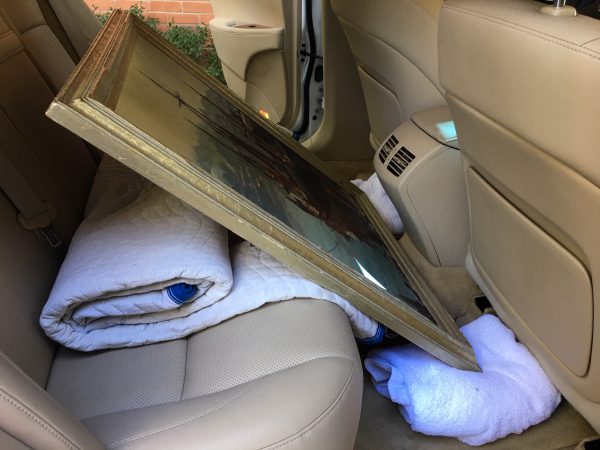 Practical Tips for Safely Transporting Artwork
Practical Tips for Safely Transporting Artwork
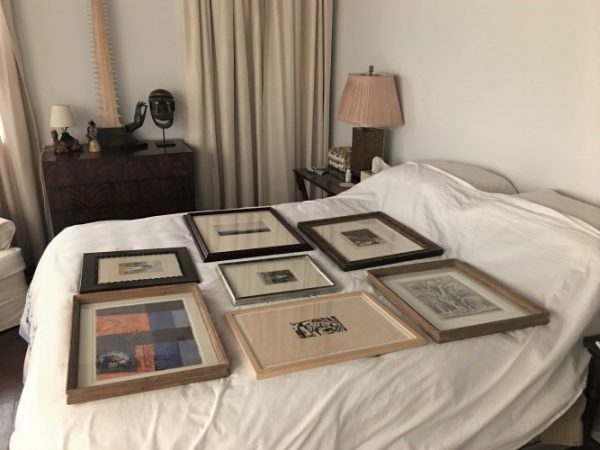 Temporarily Storing Artwork: A Case Study
Temporarily Storing Artwork: A Case Study
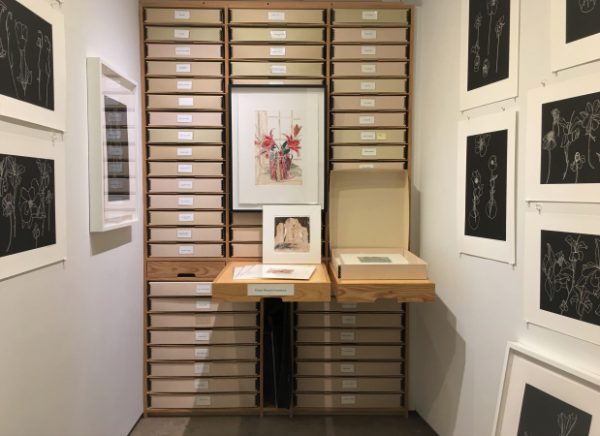 Four Artwork Storage Solutions
Four Artwork Storage Solutions
 Hanging and Framing FAQ’s
Hanging and Framing FAQ’s
 Siting Sculpture, Part One: Overview
Siting Sculpture, Part One: Overview
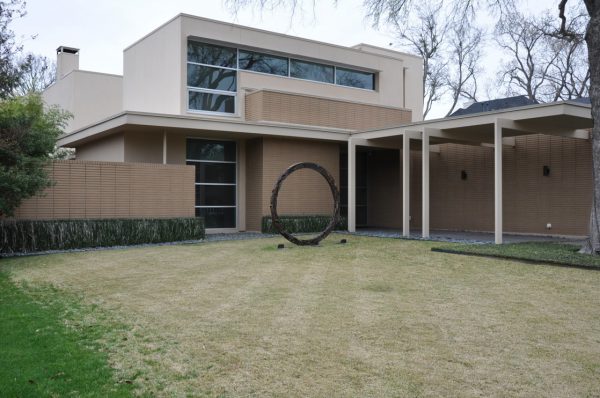 Siting Sculpture: Part Two, A Case Study
Siting Sculpture: Part Two, A Case Study
 The Importance of a Proper Frame
The Importance of a Proper Frame
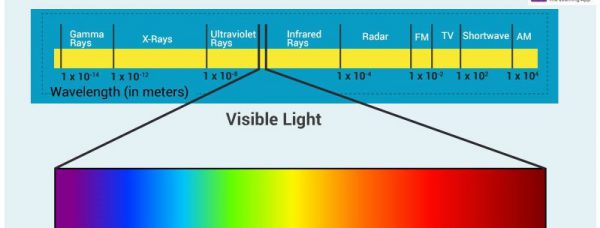 When to Use UV Control Glazing
When to Use UV Control Glazing
 Reflection on the Problem of Reflections
Reflection on the Problem of Reflections
